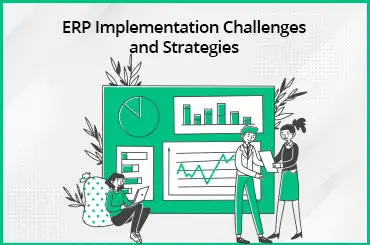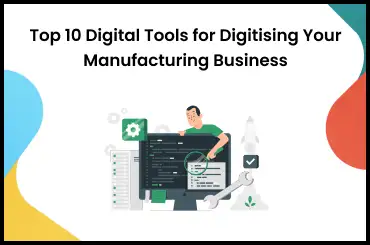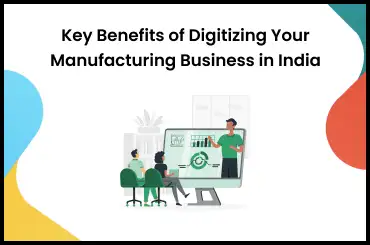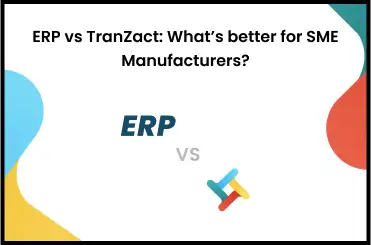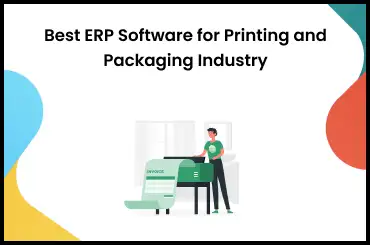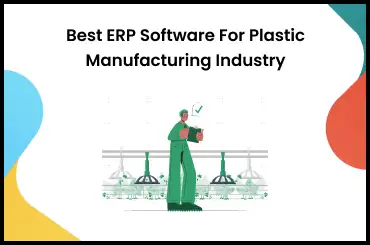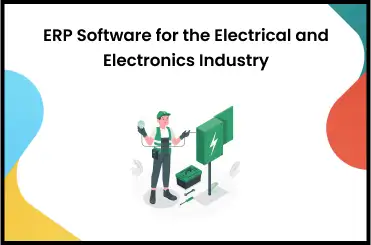One of the most important parts of running a business is its invoices. Invoice management is about handling the paperwork for buying and selling things. It is important for businesses to keep track of what they sold and to get paid on time. Nowadays, people have different tools that can make this faster and easier.
Let's understand more about Invoice Management.
What Is Invoice Management?
Invoice management is about handling and organizing the bills for products or services a company buys or sells. It includes checking and processing the bills and making sure payments are done on time.
An invoice management system and Invoice management system project simplifies tasks like:
- Creating invoices
- Processing
- Organizing invoices
Why Is Invoice Management Important?
Invoice management makes sure the longevity of the business by maintaining timely commitments. This develops trust between the service users and the service providers with timely payments.
- Effective invoice management allows businesses to track their revenue and expenses, and maintain clear records for tax purposes
- It aligns accounts with customers and suppliers and maintains updated records.
- It helps in identifying any outstanding payments and following up on them.
- By managing invoices efficiently, businesses can improve cash flow and maintain strong relationships with partners.
What Are The Different Types Of Invoices?
Invoices are a very important part of businesses. There are many types of invoices. Let us have a look at them:
-
Standard Invoice: A basic invoice that includes essential details like the seller's information, buyer's information, listed goods or services provided, quantities, prices, and the total amount due.
-
Proforma Invoice: An initial invoice that provides a detailed breakdown of the expected costs before the actual goods or services are delivered.
-
Commercial Invoice: This invoice is used for international trade. It is very effective for vendor invoice management.
-
Recurring Invoice: This invoice is issued regularly for ongoing services, such as monthly subscriptions or long-term contracts.
-
Credit Memo: This invoice is issued to adjust or correct an overcharge, refund, or return of goods.
What Are The Biggest Challenges In Invoice Management?
There are many challenges in invoice management. Let us have a look at them:
-
Manual Data Entry: Manually entering invoice details into systems can be time taking and might have mistakes.
-
Invoice Processing Delays: Invoices may get late in being accepted. This may cause delays in processing and payment.
-
Missing or Incomplete Information: Incomplete information on invoices can make it hard to correctly process payments.
-
Invoice Differences: Differences between invoices and purchase orders can create confusions that require time and effort to resolve, delaying payment processing.
How To Manage Your Invoices?
Managing invoices may be difficult. Let us have a look at how you can manage your invoices:
-
Create a standard template: Global invoice management begins with designing a precise and professional invoice template that includes all necessary details.
-
Use invoicing software: Use invoicing software or online platforms to streamline invoice generation, sending, and tracking.
-
Implement a systematic process: Make a process for generating and sending invoices.
-
Set clear payment terms: Make clear payment terms, including due date, accepted payment methods, and any applicable late payment fees or discounts for early payments.
-
Track and follow up on invoices: Maintain a system to track sent invoices, monitor payment status, and follow up on overdue payments.
Difference Between Manual and Automated Invoice Management: Which Is Best?
Choosing the correct way of invoice management is as important as the process itself. Each way has its own perks and losses. Let's understand the difference between Manual and Automated Invoice management:
Manual Invoice Management
- Time-consuming and prone to errors.
- Requires manual data entry and physical storage of paper invoices.
- Depends on manual follow-ups for tracking and payment reminders.
- Easy loss, damage, and misplacement of invoices.
- Limited reporting and analysis capabilities.
Automated Invoice Management
- Improves the entire process using technology and software.
- Reduces manual data entry and improves accuracy.
- Enables electronic storage, easy retrieval, and secure backup of invoices.
- Offers automated payment reminders and real-time tracking.
- Minimizes errors speed up processing and enhances financial control.
- Provides advanced reporting and analysis capabilities.
Which one to choose?
- Automated invoice management is more effective, accurate, and time-saving.
- It reduces errors, improves cash flow, and provides real-time insights.
- Automated vendor invoice management systems are especially valuable as businesses grow and handle higher invoice volumes.
The Transition Of Automated Invoice Management Systems
Moving to automated invoice systems means going from paper to digital methods for dealing with invoices.
-
Assessment: Assess invoice management processes and identify pain points, waste, and areas for improvement.
-
Research: Research automated invoice management systems for features, adaptability, expandability, and user-friendliness.
-
Selection: Choose an automated invoice management system that aligns with your business needs and goals.
-
Data Migration: Transfer invoice data from manual records to the new system, ensuring accuracy.
-
System Setup: Configure the automated system, including customizing [invoice templates](/gst-invoice-format), setting up workflows and approval processes, and integrating with ERP systems.
Top 5 Automated Invoice Management Systems And Platforms
It is essential to choose the best invoice management system for your business. The top 5 automated invoice management systems and platforms are: **
-
TranZact: TranZact is an invoice management platform that oversees accounting, including automated invoicing features suitable for small businesses and freelancers. This project management software with invoicing automates payment reminders and real-time tracking ofinvoice statuses.
-
QuickBooks: A popular accounting software that offers automated invoice management features, allowing businesses to generate, send, and track invoices seamlessly.
-
Xero: It enables easy creation, customization, and delivery of professional invoices, along with automated payment reminders and tracking capabilities.
-
FreshBooks: FreshBooks provides an automated invoicing system explicitly designed for small businesses with user-friendly features.
-
Zoho Invoice: It allows businesses to create professional invoices, and automate payments and reminders.
Automated Invoice Management Software
Using automated invoice management software makes creating, sending, and tracking invoices much easier. The software works well with other systems and keeps your information safe. It also allows all company workers to use it. It can help you be more accurate and have better control over your finances.
Streamline Your Invoice Management With TranZact
Effective invoice management is important for businesses. To improve your invoicing process, consider using TranZact, a complete software that offers customizable templates, automated reminders, and seamless integration with accounting systems.
With TranZact, businesses can create professional invoices, track payments effectively, and improve overall financial management. Visit TranZact's website to streamline invoice management and create better invoices today.
Faqs on Invoice Management
1. How can effective invoice management benefit businesses?
Effective invoice management improves financial transparency, optimizes cash flow, strengthens customer relationships, and enhances overall business financial control.
2. What are the types of invoices?
The different types of invoices include standard, proforma, commercial, recurring, credit memos, and debit memos.
3. How does the invoice management process work?
The process of invoice management involves generating, sending, and tracking invoices and managing payment collections.
4. What are invoice management systems?
Invoice management systems are software tools that streamline creating, sending, and tracking invoices. Examples of the same could be TranZact and Xero.
5. What challenges are associated with invoice management?
There are many challenges faced by businesses during invoice management. This includes:
- Manual data entry errors
- Delays in processing
- Incomplete information
6. How can invoice management software help overcome challenges?
Invoice management software helps businesses in several ways such as:
- Automating processes
- Reducing errors
- Improving efficiency
- Offering real-time tracking
- Reporting capabilities








